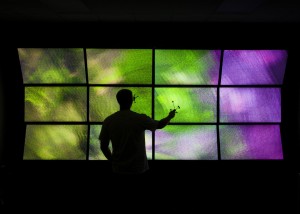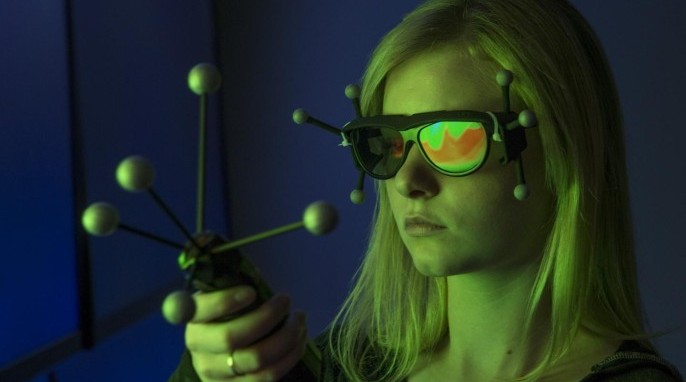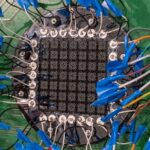VuePod: Powerful New Virtual Reality System
Since Facebook paid $2 billion to acquire the virtual reality gaming device, Oculus Rift, the 3D industry seems to be booming. Now, Brigham Young University (BYU) has added its own invention to the mix. Principally made for use in engineering, yet powerful enough for gaming, the VuePod is especially exciting because it’s comparatively cheap to build.
While the VuePod is certainly not the first immersive visualization system in academia, it might be the most cost effective. Other 3D systems cost as much as $10 million to build and maintain, but BYU’s VuePod cost only $30,000, the price of a new car.


The VuePod is the brainchild of BYU’s Department of Civil and Environmental Engineering. Student-built and operated, under the supervision of civil engineering professor Dan Ames, the VuePod is changing the way engineers are viewing environmental engineering challenges.
“This is gold,” says BYU civil engineering professor Kevin Franke. “This technology has the ability to revolutionize my job as an earthquake engineer.”
That’s because the VuePod allows users to virtually fly over, wander through or hover above 3D environments that are otherwise difficult to visit. Aircraft equipped with LIDAR (think RADAR, but with lasers) scan the landscape and records millions of data points, which are then viewed as an image on the VuePod.
One area currently available for study in the VuePod is a canyon area beneath a plateau in southern Idaho. With 3D glasses and the Wii controller, a user can virtually drop down into the canyon from above, and then fly from one end to the other.
As cool as it is to fly through a canyon, the full potential of the VuePod for an engineering application will be realized when the same data for the same canyon can be collected repeatedly over time and compared. Multiple datasets will reveal changes in the natural landscape and, thanks to the VuePod’s massive screen, it will be possible to view all of the image-making data at once.
“Our eyes and our brains are so amazing; we need to take full advantage of them,” Ames says. “That’s the value of this project: we’re presenting more information for the human eyes to detect changes.”
In addition to natural change detection, the VuePod has the potential to assist in infrastructure monitoring. It can be used to track how highways withstand the elements over time, or to examine damage to buildings after severe weather or earthquakes.
The BYU’s viewing system isn’t just an engineer’s dream, but a gamer’s, too. It uses 12 high-definition, 55-inch 3D televisions all connected to a computer capable of supporting high-end, graphics-intensive gaming. On the massive screen, images are controlled by a Wii remote that interacts with a Kinnect-like Bluetooth device (called SmartTrack), while 3D glasses worn by the user create depth of field.
“Our question has been: How can we make this technology accessible?” Ames explains. “We’re trying to determine the threshold for getting the most function at the most affordable cost. Ultimately, the goal is to take an expensive tool and make it cheaper for an everyday engineering firm to use.”
And even though Ames and his students have achieved that goal, they believe much more can be done. “We want whoever reads this paper to be able to build a better system than we built,” he says.
Ames details how BYU was able to build such a powerful system for so little in a new paper published by the Journal of Computing in Civil Engineering.
Top image courtesy of Mark A. Philbrick




